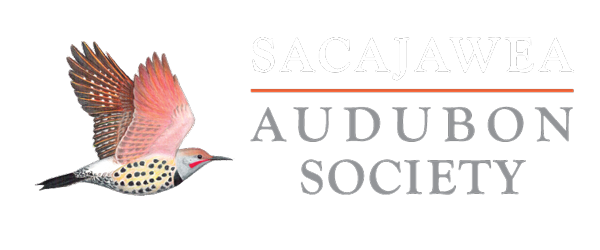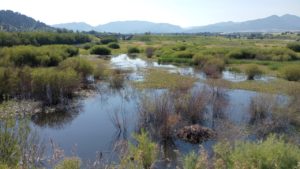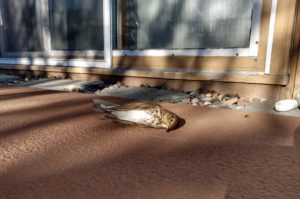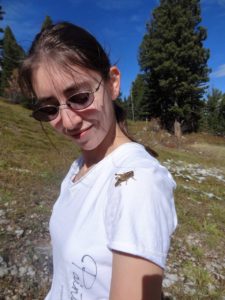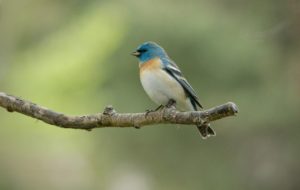November 2018 – Harris’s Sparrow
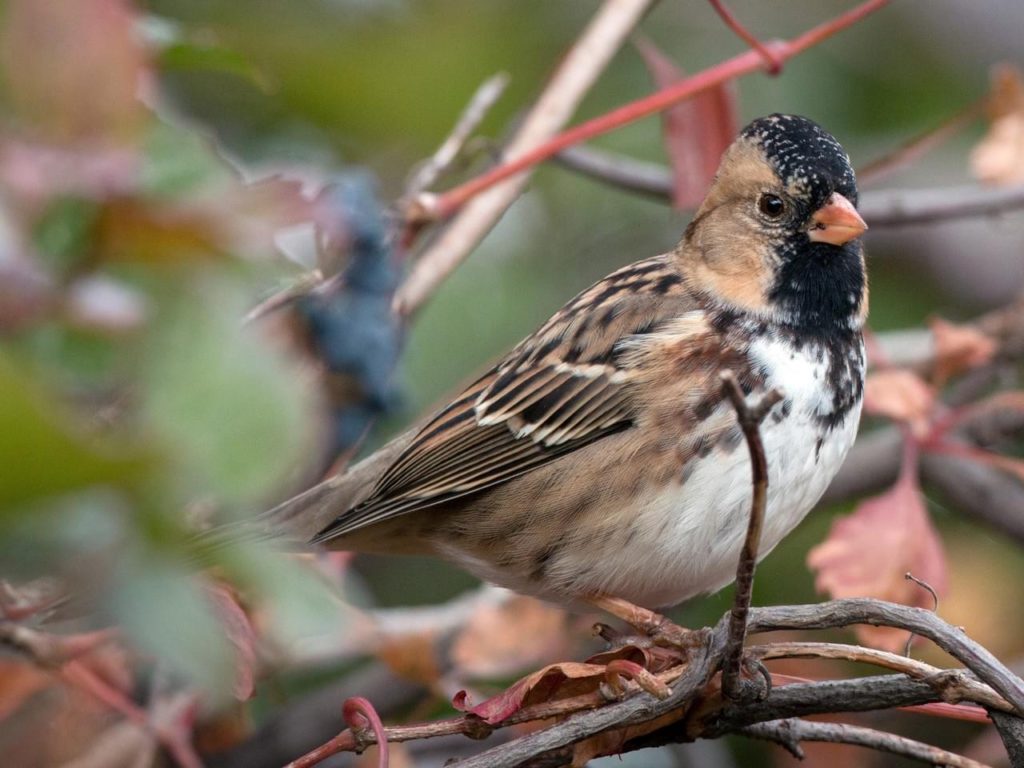
Photo by Ian Davies/Macaulay Library
Harris’s Sparrow
Zonotrichia querula
Length: 7.5 in
Weight: 1.5 oz
Wingspan: 10.6 in
During fall migration in Montana, you might be lucky enough to spot a large, plump sparrow with a pink bill, white belly and black bib. This would be a Harris’s Sparrow, North America’s largest sparrow. As is typical of sparrows, you’ll find them foraging on the ground, venturing boldly out into the open to look for food. The Harris’s Sparrow is the only North American songbird that breeds exclusively in the semiforested tundra of northern Canada. Because of its remote breeding grounds, it was one of the last species to have its nest described. The first nest was found in 1931 in Churchill, Manitoba.
In winter, Harris’s Sparrow prefer hedgerows, agricultural fields & other shrubby areas of the southern Great Plains.
The Harris’s Sparrow was named after Edward Harris, a friend of John J. Audubon, who collected a specimen in 1843. Audubon eagerly named the specimen thinking he was the first person to do so. Little did he know that Thomas Nuttall collected the bird first in 1834 and named it “Mourning Finch.”
As they get older, the black areas around the face change from patchy black to fully black. The darker the throat patch, the more dominant the individual, who will chase or push younger, lighter colored birds out of the way.
The population of Harris’s Sparrows has declined 63% between 1970-2014. The causes of the decline are unknown, but it’s likely tied to habitat loss both in their breeding and wintering grounds.
The oldest recorded Harris’s Sparrow was at least 11 years old when it was recaptured during banding operations in Kansas in 1983.
Source: Cornell Lab of Ornithology
October 2018 – Yellow-rumped Warbler
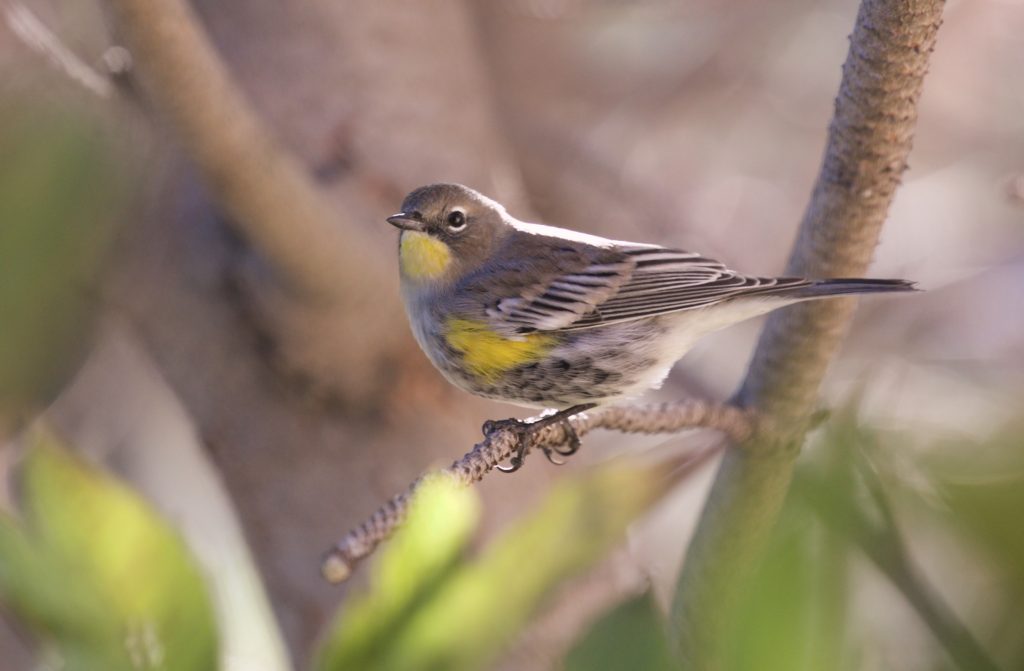
Yellow-rumped Warbler by Lou Ann Harris
Yellow-rumped Warbler
Setophaga coronata
Length: 4.7-5.5 inches
Weight: 0.4-0.5 oz (12-13 grams)
As the leaves begin to turn color this fall, you may notice small streaky yellow and brown birds with a distinctive sharp chip call flitting through the trees around the Gallatin Valley. The Yellow-rumped Warbler, one of our most common warblers, shows up early in the spring and is usually the last to leave in the fall.
This warbler with its trade-mark “yellow-rump” is the easiest to see during the fall migration, when they pass through in large numbers. They are the most versatile forager of all warblers. You most likely will spot them fluttering from a tree branch to catch a flying insect. They will also pick insects out of spiderwebs and grab them off piles of manure. Yellow-rumped Warblers switch over to eating berries in the fall. They are the only warbler able to digest the wax found in bayberries and wax myrtles, which allows them to winter further north, sometimes as far as Newfoundland, but mostly across much of central and southeastern U.S. Western populations move to the Pacific Coast to winter and other populations migrate to Mexico and Central America.
Their summer plumage is striking. Both sexes are a smart gray with flashes of white in the wings and yellow on the face, sides, and rump. Fall and winter birds are paler brown, with bright yellow rump and usually some yellow on the sides.
The oldest recorded Yellow-rumped Warbler was at least 7 years old.
Source: All About Birds, Cornell Lab of Ornithology
March 2015 – Mountain Bluebird
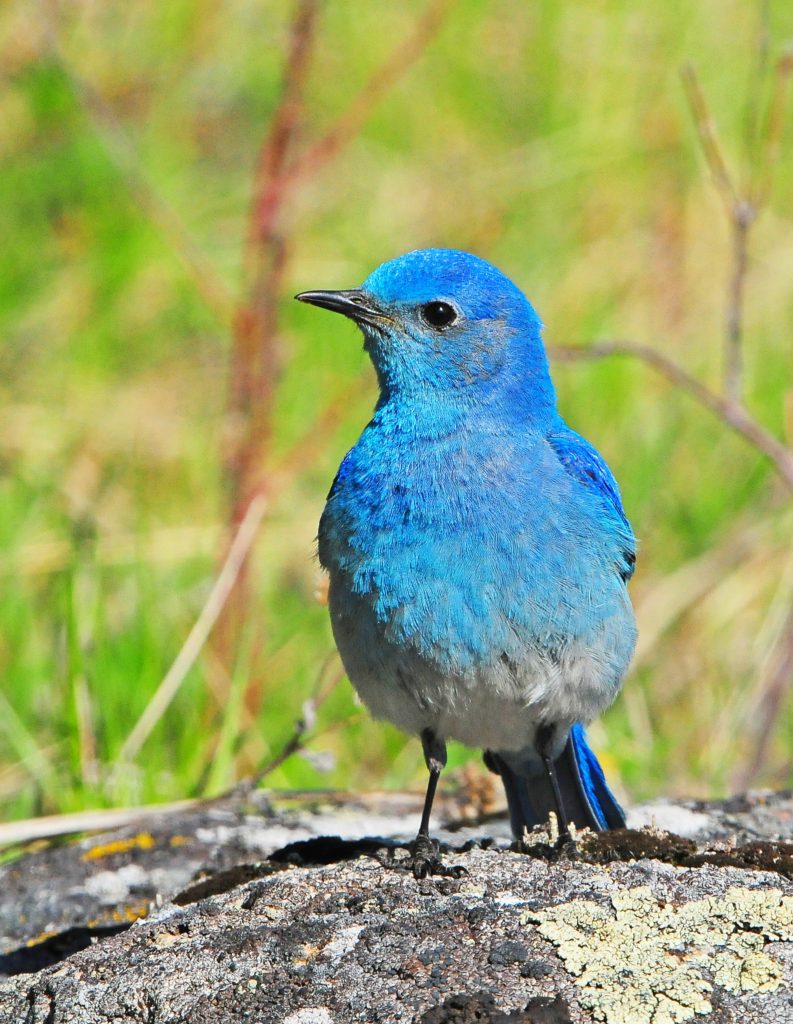
Mountain Bluebird by Paul Gore
Mountain Bluebird
Sialia currucoides
Length: 7” Weight: 1.1 oz.
On a dull brown Montana landscape, the blue flash of a male Mountain Bluebird is a welcome sign of spring. The Mountain Bluebird is a thrush of open country and higher elevations. They winter in New Mexico and Texas and begin their spring migration early, the males arriving in late February or early March. Once the male establishes his breeding territory, he waits for a female to stop by, courting her by singing, flight displays or offers of food. Female bluebirds select a mate only on the basis of the location and quality of the nesting cavity he offers her, not on his appearance or singing ability.
Nesting
After a mated pair settles down to housekeeping, the female does all of the nest building, gathering grass stems, animal hair & other vegetation for the bulk of the nest. She uses her body to form the cup, lining it with finer plant material. She incubates 4-7 light blue eggs for about two weeks. Once the eggs hatch, both the male and female bring food. The helpless nestlings grow quickly, fledging only 17-21 days after hatching. It is common for bluebirds to build a second nest (not always in the same location) and lay another clutch of eggs.
The Mountain Bluebird’s diet consists mostly of insects, preferring caterpillars & grasshoppers. In the winter and early spring, they will eat small fruits, seeds and earthworms. They use a foraging technique called “sallying” in which they fly down from a perch to snatch an insect on the ground, returning to a perch to eat.
Importance of Nest Boxes
Bluebirds are secondary cavity nesters, meaning they use old woodpecker holes to nest. In the absence of natural cavities, they will use manmade nest boxes, of which there are many around the Gallatin Valley. Sacajawea Audubon members maintain and monitor over 300 bluebird boxes in Gallatin County, also banding nestlings and adult females. These boxes are important to the Mountain Bluebirds continued survival since natural cavities are in short supply. Recaptures of banded bluebirds tells us that the same birds return every year to the same nesting territories and sometimes to the exact same nest box. In 2014, a total of 452 bluebirds fledged from those 300 boxes.
The oldest Mountain Bluebird on record in North America was 9 years old when it was caught and released in June 2005.
Source: Lou Ann Harris & All About Birds, Cornell Lab of Ornithology
